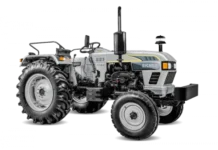Simple L5P may look strange to you. Let us start by introducing you to L5P.
The L5P is GM’s (General Motors) most recent diesel in the Duramax 6.6L family. This means it is also outfitted with every diesel emissions system imaginable.The L5P Duramax diesel engine is manufactured by General Motors for use in heavy-duty trucks. It features a 6.6-liter V8 engine with modern technologies such as an updated turbocharger, improved cylinder heads, and a new fuel injection system.
The L5P Duramax engine is designed to produce higher power and torque than previous Duramax engines, with up to 445 horsepower and 910 lb-ft of torque. It also meets severe emissions regulations thanks to an exhaust gas recirculation system, diesel particulate filter, and selective catalytic reduction system. The L5P Duramax is currently available in the GMC Sierra HD and Chevrolet Silverado HD pickups.
Features of L5P engine
Here are few features of L5P engine.
- The L5P engine has a displacement of 6.6 liters (403 cubic inches).
- The L5P engine features a high-capacity, turbocharger that helps provide strong power across the engine
- It direct fuel injection, which improves fuel efficiency, power delivery, and emissions control.
- The L5P engine has advanced emissions control technologies such as a Diesel Particulate Filter (DPF), Selective Catalytic Reduction (SCR), and Diesel Exhaust Fluid (DEF) injection.
- It has an impressive power output.
- The L5P engine features aluminum cylinder heads and a strong cast iron block, balancing weight reduction with durability.
- This includes an improved cooling system and larger cooling fan.
- The L5P engine uses advanced engine management and calibration systems to optimize performance, emissions, and fuel efficiency. This system monitors various parameters and adjusts engine operation accordingly.
Why have deleted L5P?
Some enthusiastic truck owners want their L5P deleted. After throwing light on so many features of the L5p engine it may come to the mind of people that why usually get their L5p deleted? It is typical to delete the L5P DPF system for both preventative maintenance and performance reasons. The absence of these complex systems decreases the possibility of costly maintenance while also allowing for more power generation.
Reasons for deleted L5P
While these emissions systems are excellent for lowering emissionsand they have reduced harmful emissions by using technologies such as EGR, DPF, and SCR in the L5P, but this has come at the expense of engine performance and efficiency, they do have a few drawbacks. The L5P’s emissions systems don’t have many typical issues, but they are highly expensive to replace when they do fail.
Any DPF system is susceptible to clogging, and replacing it can easily cost more than $5,000. Furthermore, they are limiting in terms of performance.Another potential issue with these new systems is that if a malfunction develops inside them, it can be highly expensive to repair or replace the offending component.
Consequences of deleted L5P
Deleting or modifying the emissions control systems, including L5P engine can have several consequences, including:
Legal Consequences:
In many regions, tampering with emissions control systems is illegal and can result in significant fines and penalties.
Environmental Impact:
These engines are designed to capture harmful substances from the gasses emitted from the engine deleted L5P lead to increased emissions of harmful pollutants, contributing to air pollution.
Engine Reliability:
Deleted L5Pcan lead to changes in exhaust flow and backpressure, potentially affecting engine performance, fuel efficiency, and overall reliability.
Warranty Issues:
Modifying or deleting L5P systems can void your vehicle’s warranty. Because are included in unauthorized modifications.
Resale Value:
Vehicles with modified emissions systems often have lower resale value due to potential legal and performance issues. Many buyers prefer vehicles that are compliant with emissions regulations.
Diagnostic and Maintenance Challenges:
Deleted L5P can trigger warning lights and error codes, making it challenging to diagnose and resolve issues. Ongoing maintenance may also become more complex.
Increased Noise:
Altering the exhaust system can lead to changes in exhaust note and potentially result in louder exhaust noise, which might not comply with local noise regulations.
Conclusion
Deleting L5P involves removing certain exhaust system components. EGR and DPF delete are both part of the L5P deletion process. To be more specific, the DPF delete entails removing the DPF, SCR, and Diesel Exhaust Fluid. After physically removing the components, we must tune the car to check that the deletion was successful.
Read Also: Patterned Sheets: Infuse Your Bed with Personality and Charm


































































